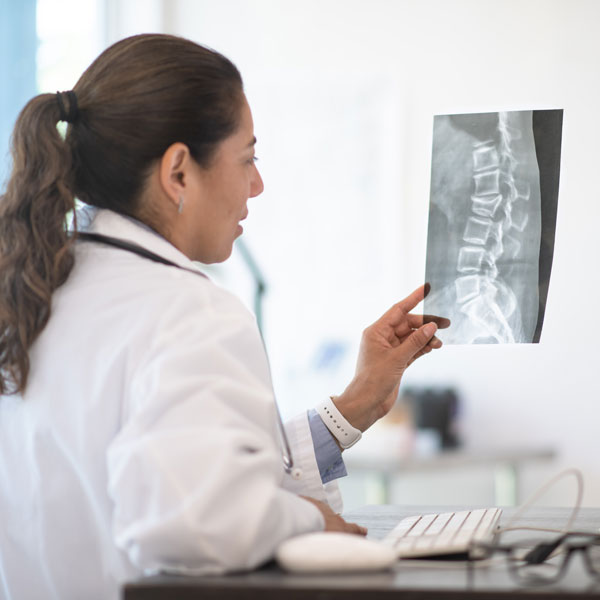Discogram
What Is a Discography and a Discogram?
Discography means “study of the disc” and discogram means “picture of the disc.”
Why Perform a Discogram?
This test is the best way to determine which discs are normal or abnormal. It is done in an attempt to understand exactly where your pain is coming from and to be certain the disc above or below an intended fusion is normal. In general, do not undergo a discogram unless you are considering surgery.

How Is a Discography Interpreted?
- A number of factors are considered which may include:
- The amount of fluid that can be injected into the disc.
- Whether injection of a particular disc reproduces the same pain that brings you to see the physician.
- The appearance of the disc on the subsequent X-ray pictures.
Once the doctor has the results of your discogram, he or she will look at all of the information that has been gathered. These factors are interpreted and recommendations will be discussed at your follow-up visit.
So, What’s the Disc?
The disc is an oval-shaped soft structure that cushions and separates adjacent vertebrae. It has a firm outer ring called the annulus fibrosus and a center portion that is called the nucleus pulposus, which is often referred to as being “jelly-like.”
What Is Degenerative Disc Disease?
This is a broad, non-descriptive term used to describe the “breakdown” of a spinal disc(s), which can result from defects one is born with and which may predispose a person to the development of problems. It may also result from trauma, repeated spine injuries, smoking, and to some degree, the aging process.
This breakdown can result in the narrowing of the disc space(s), cause abnormal spinal movement, and possibly create spinal nerve root compression. Back or neck pain is often the result of “unhealthy” discs.
What Are the Significant Potential Risks Associated With This Procedure?
Soreness and increased low back or neck spasms are common complaints after this test. Fortunately, these usually pass within a few days. Pain medicine and muscle relaxants may be prescribed to ease these side effects.
A chief concern is the possibility of infection or inflammation of the disc, which may require other treatment. When any probe or other surgical instrument is put into the body, such as needles in this case, there is the possibility of breakage of the needle or injury to some adjacent structure or nervous tissue.
Allergic reactions to the dye or radio-opaque substance can occur. Any history of previous allergy to iodine-containing substances should be brought to the attention of the physician before this test. Serious complications are rarely seen. It is possible the test may be inconclusive or unforeseen complications may occur.
What Are My Other Options or Alternatives?
This study is an elective diagnostic test. Your other options include doing nothing, continuing with your existing limitations and capacities, or conservative therapy, bracing, pain management, and the use of certain medications as indicated on an individual basis.
I Have Been Scheduled for a Discogram. Now What?
- First, plan to bring someone to drive you home after the discogram. If you come alone, medication normally given to minimize procedural discomfort will not be provided.
- We ask that you do not eat or drink anything four hours prior to the procedure (this includes gum, water, smoking, and hard candy). Also, make sure to bring all necessary insurance information for the registrar.
- Please check-in one hour prior to your scheduled discogram. If you are running late or need to cancel your appointment, please notify us as soon as possible.
- Discontinue all blood thinners (Plavix, Coumadin, Aspirin, etc.), as well as any vitamins (fish oil, omegas, Vitamin E, garlic, ginger, etc.). Anti-inflammatories should be discontinued one week prior to the procedure.
How Long Does This Test Take?
Time is directly related to the number of discs to be studied. With this in mind, the study usually takes less than an hour. You will remain in the special procedures area for observation for a period of approximately 30 minutes after the study. A designated driver is required to accompany you and drive you home. If there is no designated driver available, pain medication or sedation will not be given.
